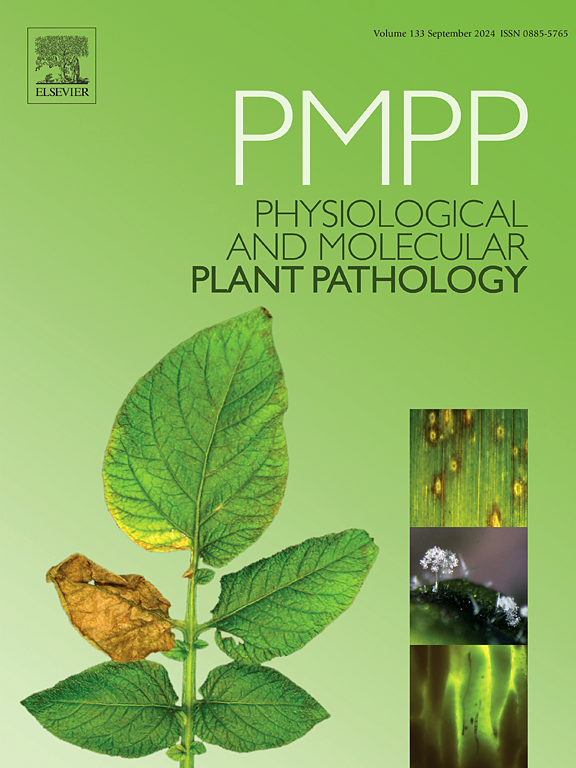Whole genome sequencing of rice endophyte Bacillus paralicheniformis NB stem 4: A potential biocontrol agent for the suppression of pearl millet blast disease
IF 2.8
3区 农林科学
Q2 PLANT SCIENCES
引用次数: 0
Abstract
The supreme role in managing the phytopathogens of cultivable crops had been provided by chemical pesticides. An alternative approach for managing the plant disease with less residual effect on the ecosystem and plant growth promoting attributes are emphasized globally. Hence, biocontrol of plant pathogens using Bacillus licheniformis isolated from Nona Bokra, the salt tolerant rice cultivar was explored for the management of blast infecting pearl millet. Genome annotation of Bacillus licheniformis NB stem 4 was identified as B. paralicheniformis NB stem 4 with accession number SRR21528255. Genome analysis revealed the presence of 958, 374, 583 reads with an average (mean) read length of 2906 bp. There were 11 number of contigs in the assembled genome with total length of 43,13,072 bp with an average G + C content of 45.94 %. The protein coding sequences in the genome were 9984, tRNA regions were 80 with 24 ribosomal RNA (r RNA) genes and 53 repeat regions. The genome annotation of B. paralicheniformis NB stem 4 included 1691 hypothetical proteins and 8293 proteins with functional assignments. Non ribosomal peptide synthetase (NRPS) gene clusters in the genome of NB stem 4 include fengycin, putrebactin/avaroferrin, butirosin A/butirosin B, lichenysin, streptin, equibactin, bacillibactin and alkylpyrone-407/alkylpyrone-393. The in vitro screening for examining the antifungal action of B. paralicheniformis NB stem 4 against Magnaporthe grisea of pearl millet suppressed the mycelial growth M. grisea by producing antimicrobial compounds including piperidinone, 4-quinolinol, 7-hydroxycoumarin, traumatic acid, bioallethrin, actinomycin, clindamycin, lycoxanthin, nizatidine, furanone, triamcinolone acetonide, decatrienoic acid, hexadecanoic acid, eicosadienoic acid, trilinolein, 5-hydroxymethyldihydrofuran-2-one and cyclopentanedione. Thus, B. paralicheniformis NB stem 4 can be explored for the management of M. grisea infecting pearl millet.
求助全文
约1分钟内获得全文
求助全文
来源期刊
CiteScore
4.30
自引率
7.40%
发文量
130
审稿时长
38 days
期刊介绍:
Physiological and Molecular Plant Pathology provides an International forum for original research papers, reviews, and commentaries on all aspects of the molecular biology, biochemistry, physiology, histology and cytology, genetics and evolution of plant-microbe interactions.
Papers on all kinds of infective pathogen, including viruses, prokaryotes, fungi, and nematodes, as well as mutualistic organisms such as Rhizobium and mycorrhyzal fungi, are acceptable as long as they have a bearing on the interaction between pathogen and plant.

 求助内容:
求助内容: 应助结果提醒方式:
应助结果提醒方式:


